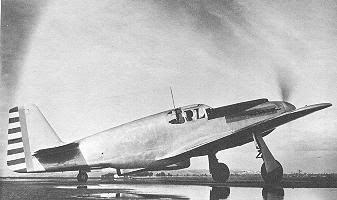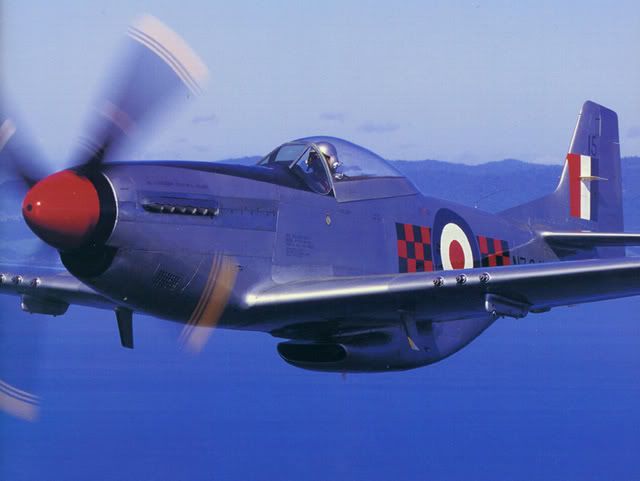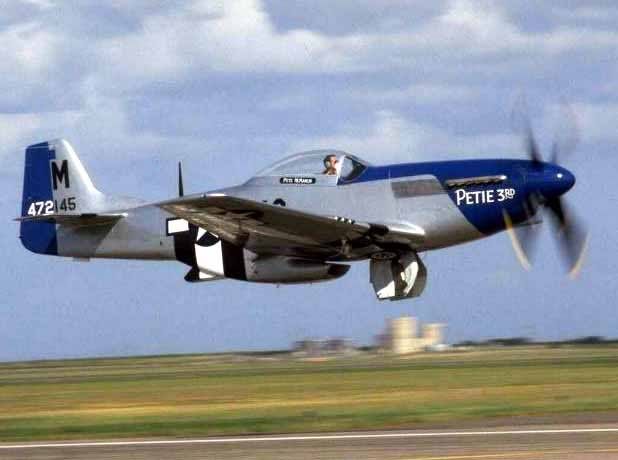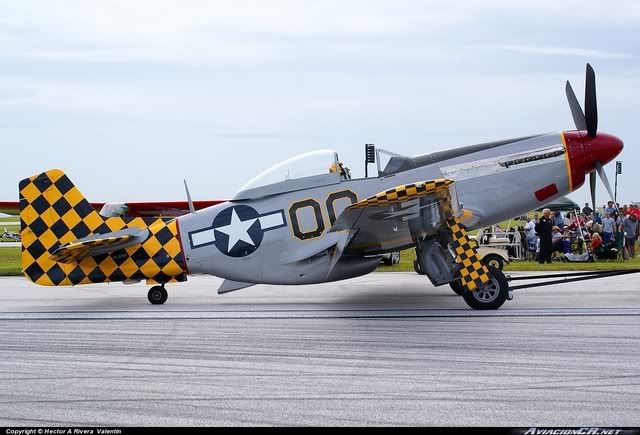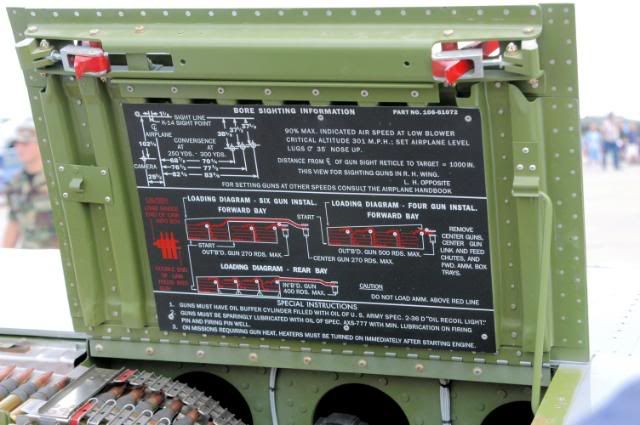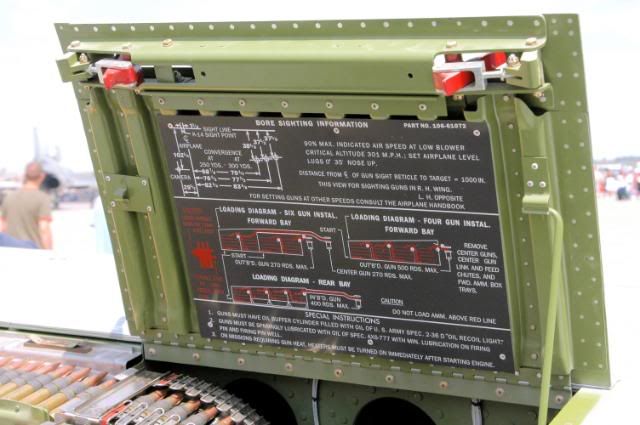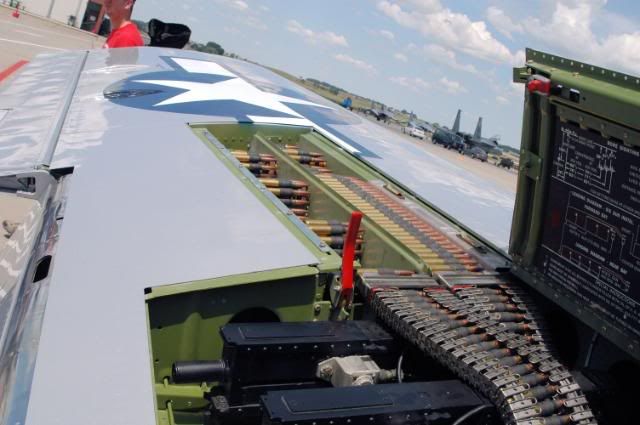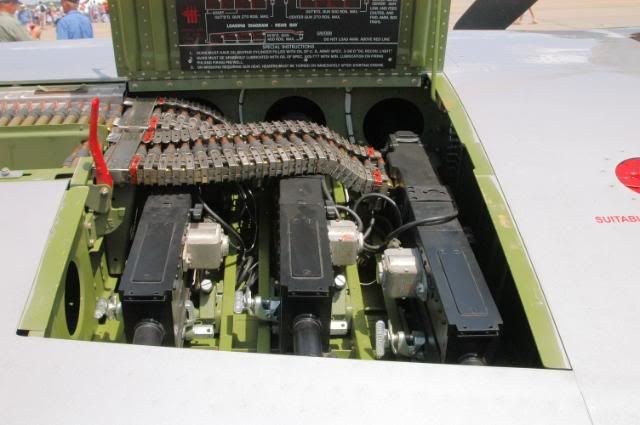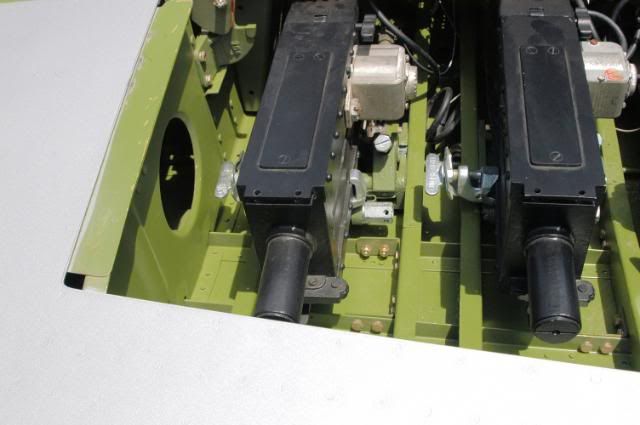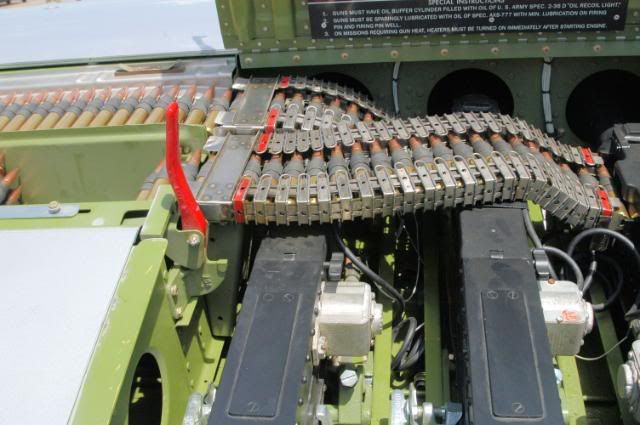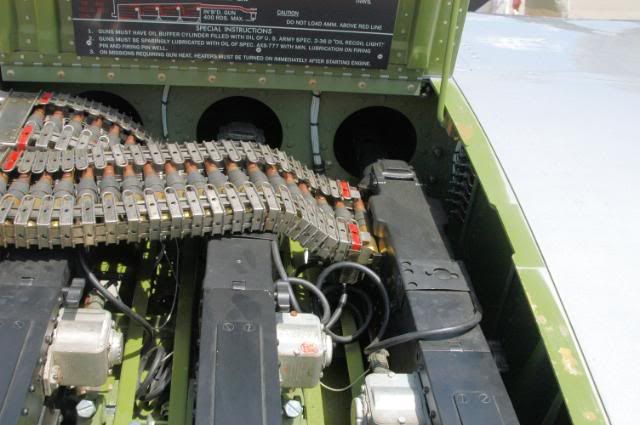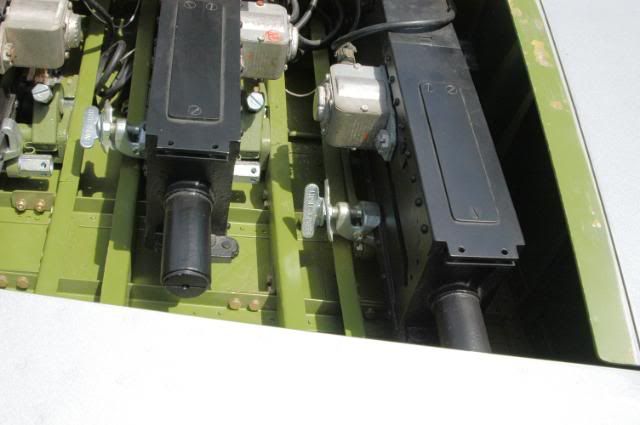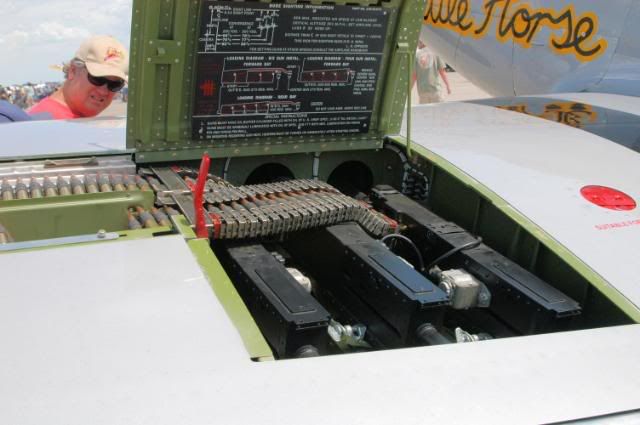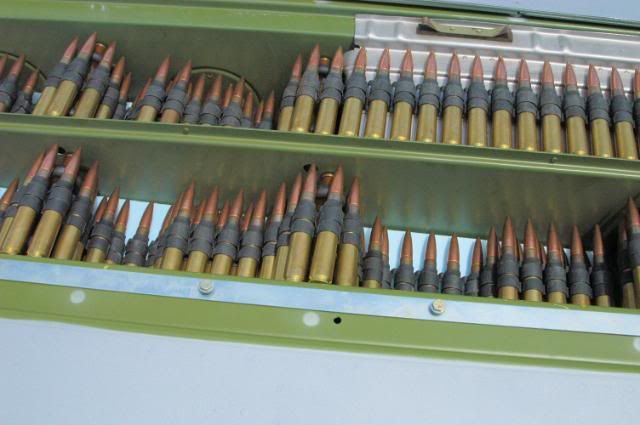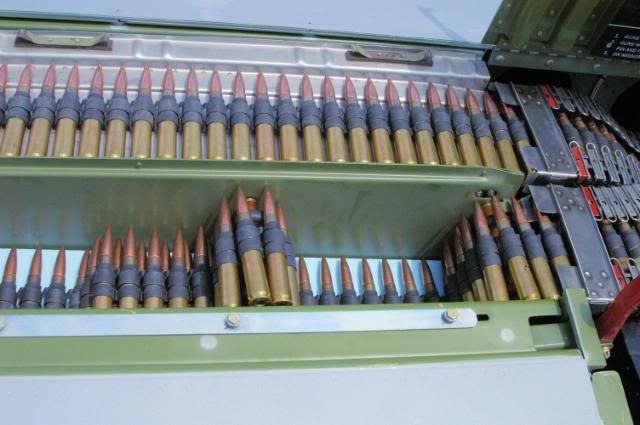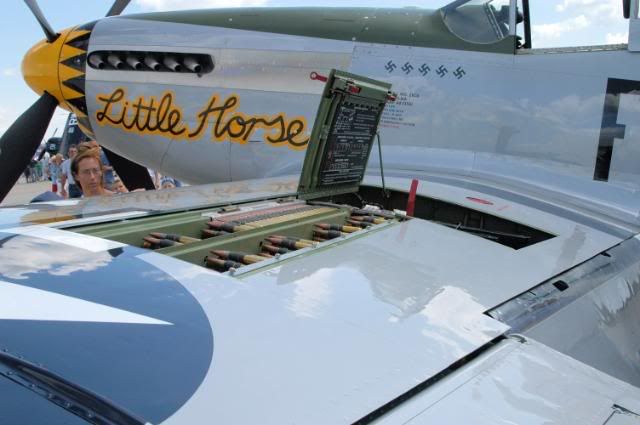Estás usando un navegador obsoleto. No se pueden mostrar estos u otros sitios web correctamente.
Se debe actualizar o usar un navegador alternativo.
Se debe actualizar o usar un navegador alternativo.
North American P-51 Mustang
- Tema iniciado Guilito_f16
- Fecha de inicio
g lock
Colaborador
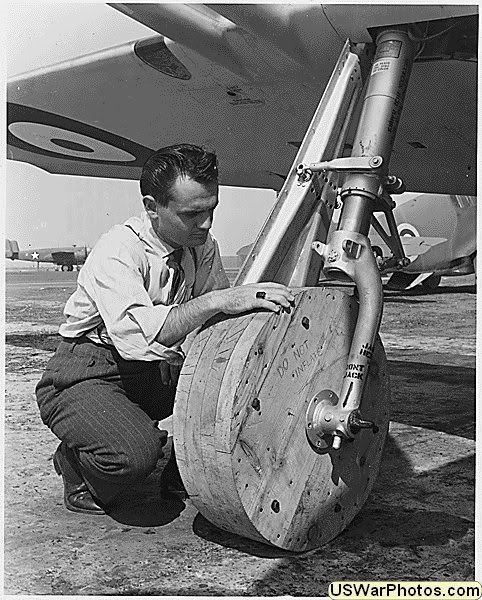
Obrero trabajando sobre una rueda de madera en un P 51, previo a la finalizacion del montaje y entrega
Me mató la leyenda en la rueda...:smilielol5:
Bati, Espectacular lo tuyo, camarada!!
Miguel, mortales las fotos, muy buenas!!
Abrazos!!

Visible throughout in Mustang's design is the care which North American designers approached the drag problem. Any drag-inducing feature found was addressed in one way or another, such as these small fairing over the three gun barrels in the port wing.

Starboard universal rack. Almost all P-51D-25-NA and subsequent series aircraft had these underwing hardpoints not only for bombs and fuel tanks but also for various types of rocket launchers

Underwing drop tank. A number of different types of drop tanks was used on P-51s during the war. This is the most solidly built metal 75 gallon tank, and it was the one which prevailed also for post-war use.
MUSTANG NAVAL
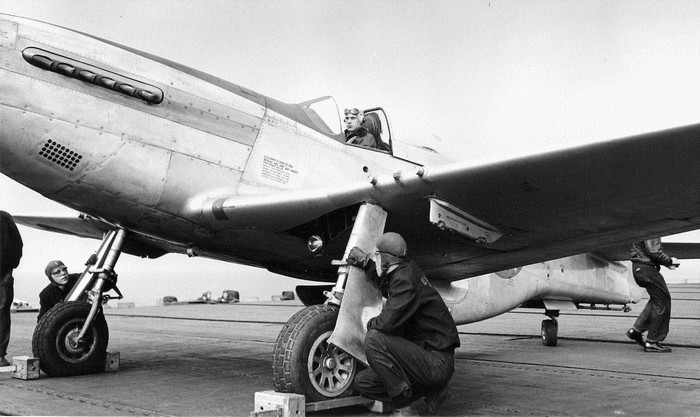
P-51D #44-14017, the naval Mustang prototype. Bob Elder is at the controls. Notice the catapult hook on the fuselage underside between the wings (Photo: US Navy)
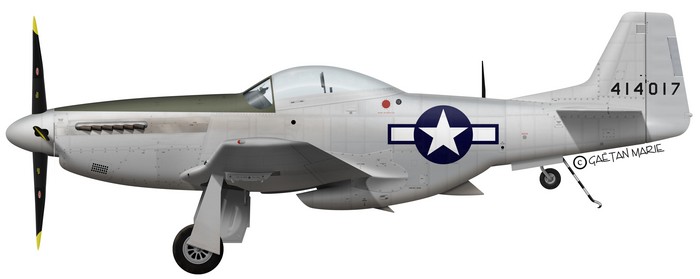
The naval Mustang prototype: a modified P-51D-5NA. Profile by Gaëtan Marie.
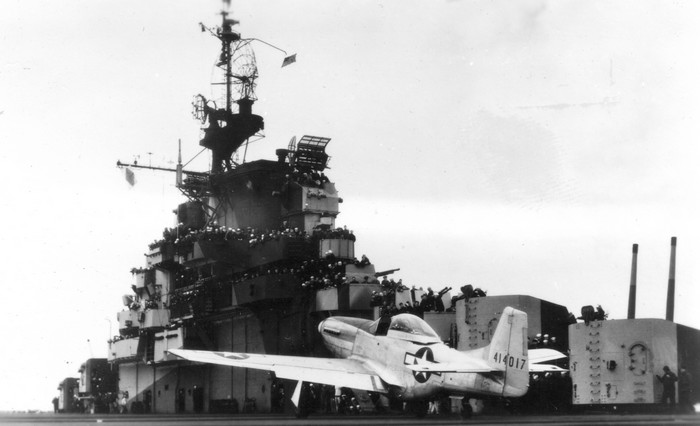
44-14017 on the deck of USS Shangri-La during the trials in November 1944. (Photo: US Navy).
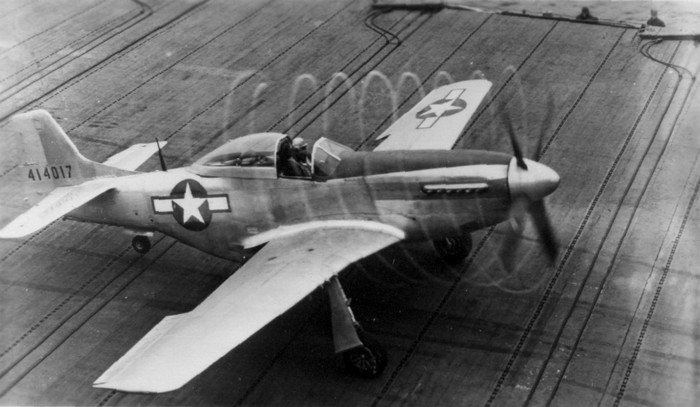
Another view of 44-14017 flown by Lt Elder during the trials
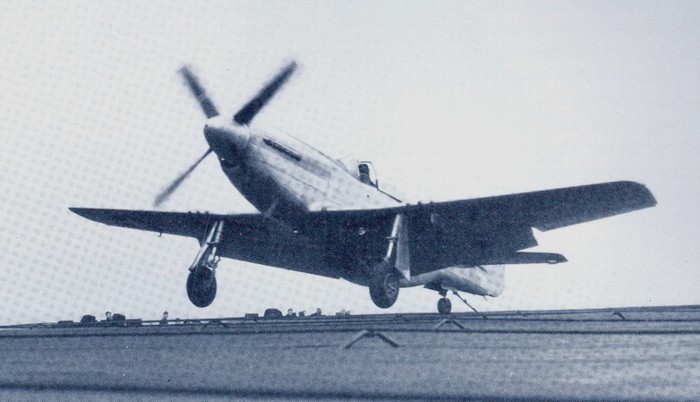
The ETF-51D prototype about to catch the arrester cable upon landing. Elder complained that aircraft attitude upon landing had to be precisely controlled, or the airframe would be damaged. (Photo: US Navy).
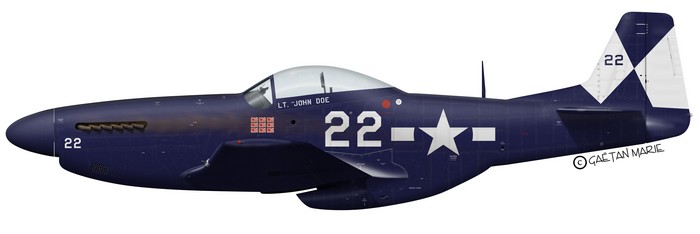
Had the naval Mustang entered operational service, this is what it could have looked like. Based on a VF-4 F6F Hellcat's livery in early 1945. Profile by Gaëtan Marie.

P-51D #44-14017, the naval Mustang prototype. Bob Elder is at the controls. Notice the catapult hook on the fuselage underside between the wings (Photo: US Navy)

The naval Mustang prototype: a modified P-51D-5NA. Profile by Gaëtan Marie.

44-14017 on the deck of USS Shangri-La during the trials in November 1944. (Photo: US Navy).

Another view of 44-14017 flown by Lt Elder during the trials

The ETF-51D prototype about to catch the arrester cable upon landing. Elder complained that aircraft attitude upon landing had to be precisely controlled, or the airframe would be damaged. (Photo: US Navy).

Had the naval Mustang entered operational service, this is what it could have looked like. Based on a VF-4 F6F Hellcat's livery in early 1945. Profile by Gaëtan Marie.
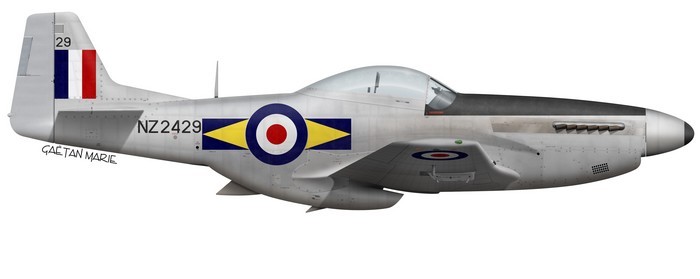
4 Squadron's NZ 2429
© Gaëtan Marie
NZ 2429 was P-51D-25-NT s/n 45-11521 and was used by the New Zealand Territorial Air Force's 4 (Otago) Squadron based in Taieri. It was received by the squadron on September 6, 1951 and used until February 27, 1953 when F/O T. C. Beech had to force-land it on Santoft beach near Raumai. The aircraft could have been salvaged but the days of the Mustang were coming to an end and instead it was used as a gunnery target. Note that it did not carry the typical checkerboard squadron markings of TAF Mustangs
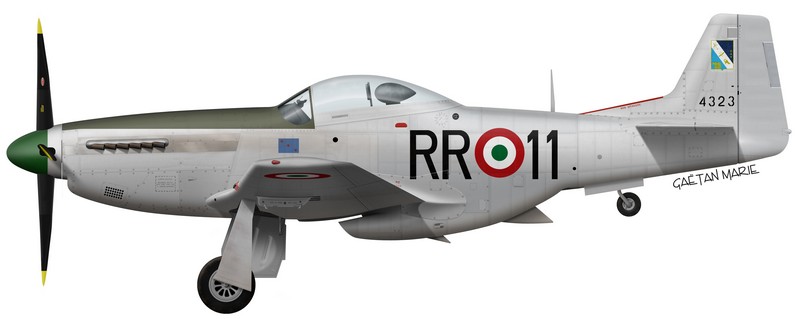

Ranieri Cupini's MM4323
© Gaëtan Marie
P-51D-25-NA serial number 44-73451 was received by the Aeronautica Militare in November 1950 and received the Italian serial MM4323. It was General Ranieri Cupini's personal mount, which he flew until 1953. It carries the General's personal badge. It was also the longest-serving Mustang in the italian Air Force, performing its last flight on September 30, 1964. It has been on display at the Italian Air Force Museum at Vigna di Valle since 1984.
Pictures of the aircraft during its operational career show it carrying the code ZR*11, and not RR*11.
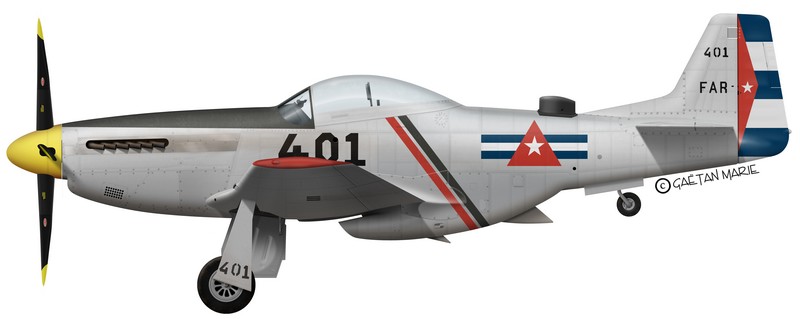
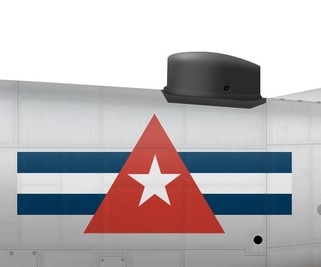
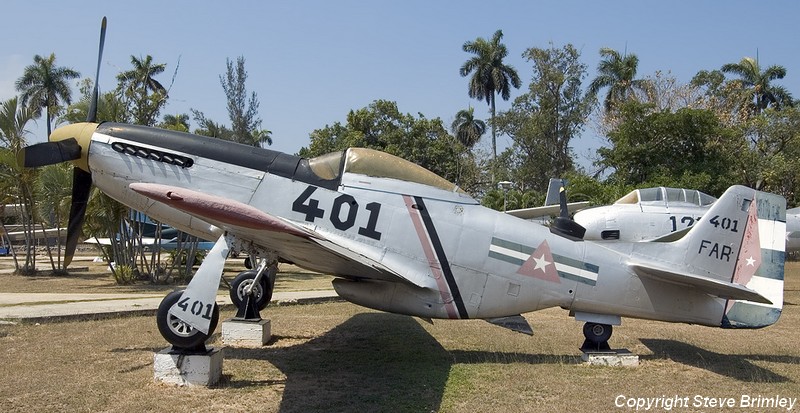
CUBAN FAR-401
© Gaëtan Marie
This is the second Cuban Mustang, FAR-401, ex-Royal Canadian Air Force (RCAF-9233) F-51D-30-NA serial number 44-74505. This aircraft was sold on the US civilian market (register N68DR, later N3990A) and ended up in Miami, where it was bought by a certain Allen McDonald, a suspected cover name for FAR operatives.
Notice the "box" antenna on the fuselage spine. This aircraft is now preserved in La Havana and is in quite poor shape.
Y diría más; los aviones de la North American Aviation (luego Rockwell), fueron en general, siempre hermosos diseños, y tal vez, los más lindos de EE.UU. (El XB-70 es tal vez el avión más impresionante que haya volado)
Soy de los que creen que el Mustang fue una gran bisagra para los aliados, tenia de todo, potencia, poder, alcance y el K-14 gunsight fue algo excelente en Caballito.
Para mi el mejor avion, tanto por prestaciones, resultados y belleza de la SG2
Para mi el mejor avion, tanto por prestaciones, resultados y belleza de la SG2
Temas similares
- Respuestas
- 15
- Visitas
- 3K
- Respuestas
- 2K
- Visitas
- 124K
- Respuestas
- 103
- Visitas
- 9K

